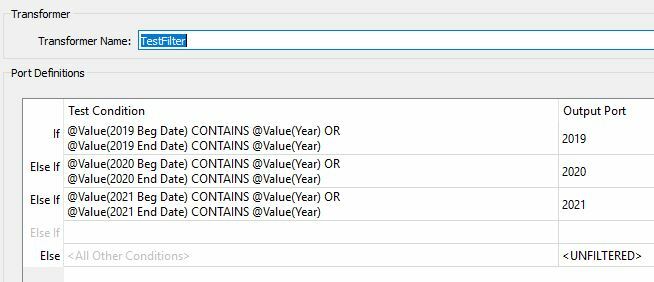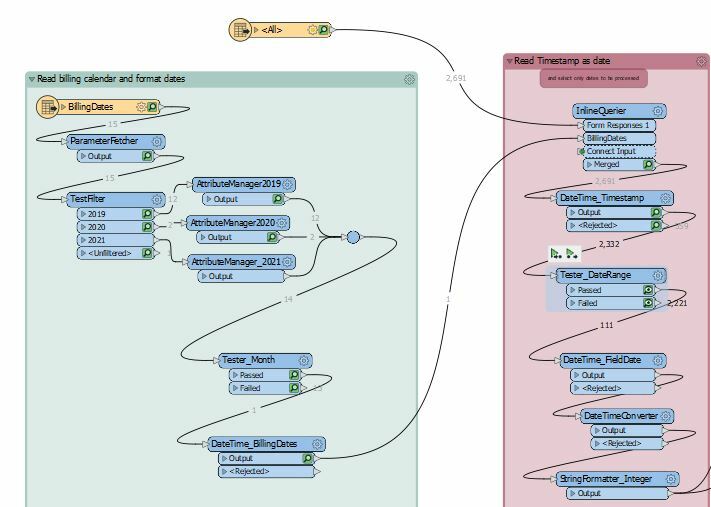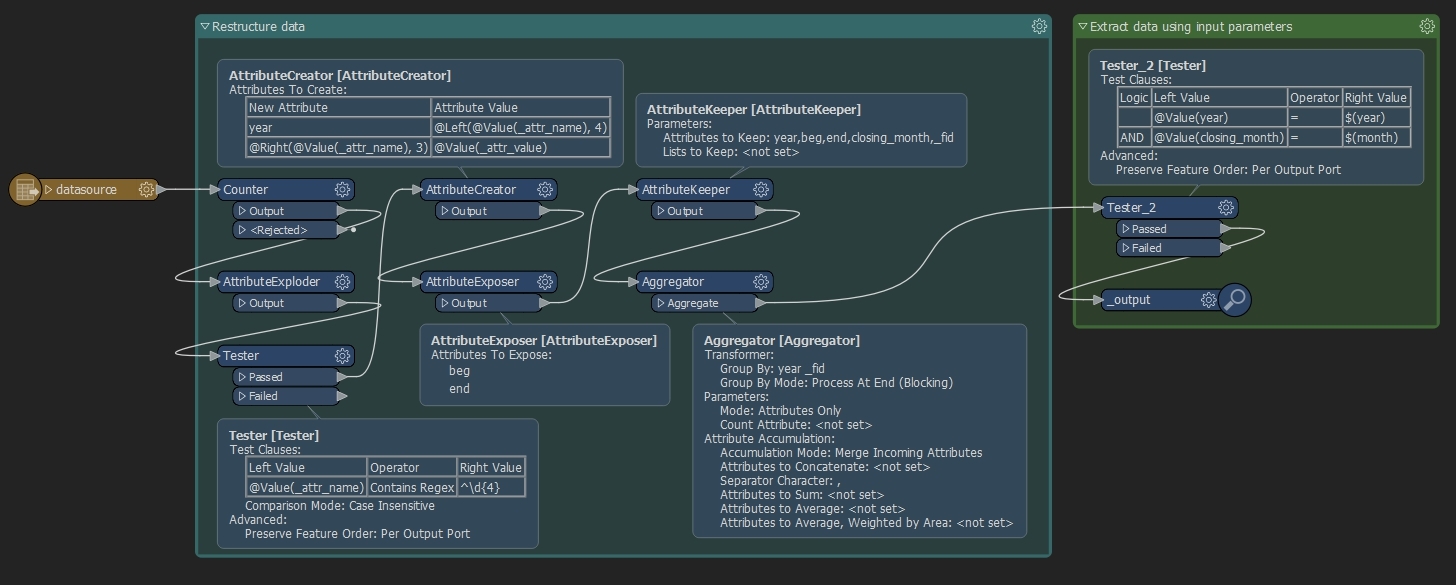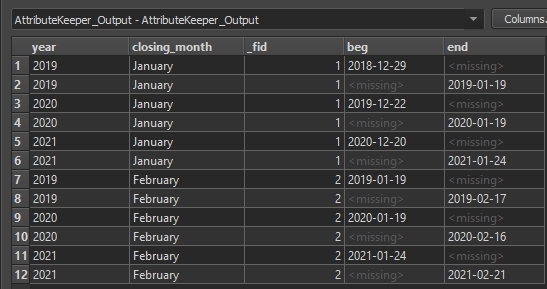I have a google sheet with columns for Beg Date and End Date for several years (2019 Beg Date, 2020 Beg Date, etc). I have a user parameter for Year. I have a parameterFetcher to get the parameter but then how do I filter for only that year. If the user enters 2020 how do I only utilize 2020 Beg Date and 2020 End Date. Right now all of the years (2019 Beg Date …) show up as attributes.
This post is closed to further activity.
It may be an old question, an answered question, an implemented idea, or a notification-only post.
Please check post dates before relying on any information in a question or answer.
For follow-up or related questions, please post a new question or idea.
If there is a genuine update to be made, please contact us and request that the post is reopened.
It may be an old question, an answered question, an implemented idea, or a notification-only post.
Please check post dates before relying on any information in a question or answer.
For follow-up or related questions, please post a new question or idea.
If there is a genuine update to be made, please contact us and request that the post is reopened.






 There is a user parameter for month and year. So if I want to run the report from March 2019, I need to extract the 2019 Beg Date and 2019 End dates for March. I have a tester for the month - that's the easy part. How do I then extract just the 2019 dates? My work around is a TestFilter by year
There is a user parameter for month and year. So if I want to run the report from March 2019, I need to extract the 2019 Beg Date and 2019 End dates for March. I have a tester for the month - that's the easy part. How do I then extract just the 2019 dates? My work around is a TestFilter by year Then I have have an AttributeManager to remove the years I don't want and change the attribute name I want to just BegDate and EndDate so it's generic going forward.
Then I have have an AttributeManager to remove the years I don't want and change the attribute name I want to just BegDate and EndDate so it's generic going forward.  The selected dates then move on later to merge with my data and be filtered.
The selected dates then move on later to merge with my data and be filtered. General flow
General flow This is a very manual way to do it that means adding to this list as time goes forward. Is there a more dynamic way to get only the dates I need?
This is a very manual way to do it that means adding to this list as time goes forward. Is there a more dynamic way to get only the dates I need?


